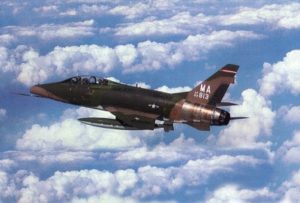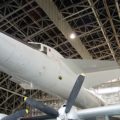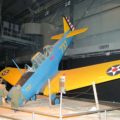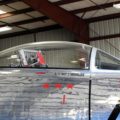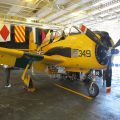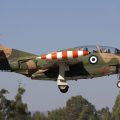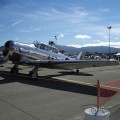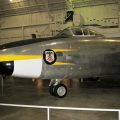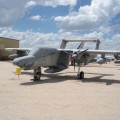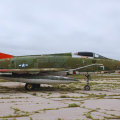The North American F-100 Super Sabre was an American supersonic jet fighter aircraft that served with the United States Air Force (USAF) from 1954 to 1971 and with the Air National Guard (ANG) until 1979. The first of the Century Series of USAF jet fighters, it was the first USAF fighter capable of supersonic speed in level flight. The F-100 was designed by North American Aviation as a higher performance follow-on to the F-86 Sabre air superiority fighter.
Source: North American F-100 Super Sabre on Wiki
...
More info:
The North American F-100 Super Sabre was a supersonic jet fighter that served with the United States Air Force (USAF) from 1954 to 1971 and with the Air National Guard (ANG) until 1979. It was the first USAF fighter capable of breaking the sound barrier in level flight. The F-100 was designed by North American Aviation as a higher performance follow-on to the F-86 Sabre air superiority fighter.
The F-100 was originally intended as an air superiority fighter, but it also performed various other roles such as close air support, interdiction, and nuclear strike. The F-100 was equipped with a single Pratt & Whitney J57 turbojet engine that produced up to 17,000 pounds of thrust with afterburner. The F-100 had a maximum speed of over 860 miles per hour and a combat radius of about 400 miles. The F-100 could carry up to four 20 mm cannons and a variety of bombs and rockets on its six underwing hardpoints.
The F-100 saw extensive combat service during the Vietnam War, where it flew over 360,000 sorties and suffered the highest loss rate of any USAF aircraft in the conflict. The F-100 also participated in several other conflicts and crises around the world, such as the Cuban Missile Crisis, the Dominican Republic intervention, and the Six-Day War. The F-100 was gradually replaced by newer fighters such as the F-4 Phantom II and the F-105 Thunderchief in the 1960s and early 1970s. The last operational F-100s were retired by the ANG in 1979.

